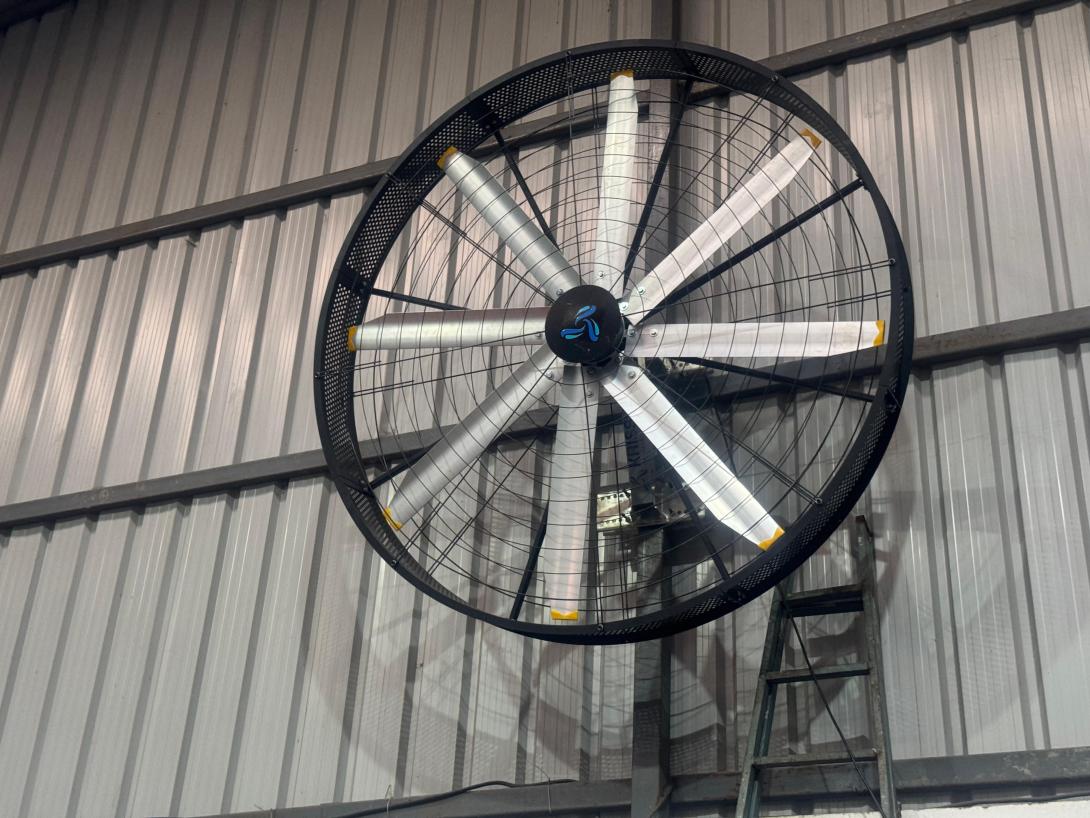
In industrial environments, where large-scale operations involve heavy machinery, chemicals, and high temperatures, safety is paramount. One of the most overlooked yet critical components of industrial safety infrastructure is ventilation — and more specifically, industrial wall fans. While these fans are often associated with cooling and air circulation, they also play a significant role in fire safety and smoke management, acting as a first line of defense in controlling hazardous conditions that arise during fire incidents.
Understanding the Importance of Ventilation in Industrial Spaces
Industrial settings such as manufacturing plants, warehouses, and processing units are particularly vulnerable to fire hazards due to the presence of flammable materials, combustible dust, and electrical systems. In such environments, effective ventilation systems do more than just maintain comfort. They help manage the quality of air, reduce the risk of fire escalation, and aid in the control and evacuation of smoke and toxic gases during emergencies.
This is where industrial wall fans come into play. Mounted on walls, these fans are designed for high-volume air movement, enabling them to ventilate large spaces efficiently. They are strategically positioned to push or pull air, helping to maintain airflow patterns that prevent the accumulation of heat and hazardous fumes.
Fire Safety Through Heat Control
One of the primary roles of industrial wall fans in fire safety is heat management. Many industrial fires are exacerbated — or even initiated — by excessive heat buildup in poorly ventilated areas. Wall fans help mitigate this risk by promoting continuous air circulation, reducing localized heat pockets that could ignite flammable materials.
Moreover, in certain processes such as welding or metal cutting, high temperatures are a normal part of the operation. Without adequate ventilation, these high temperatures can compromise the safety of the surrounding environment. Industrial wall fans assist in dissipating this heat, thus contributing to a safer workspace.
Smoke Management During Fire Incidents
During a fire, smoke is one of the most immediate and dangerous threats. It not only obscures vision, making evacuation difficult, but also contains toxic gases such as carbon monoxide and hydrogen cyanide, which can be deadly even in small concentrations. Rapid smoke evacuation is therefore essential in minimizing health risks and facilitating escape.
Industrial wall fans can be integral to smoke management systems. When connected to automated fire detection and suppression systems, these fans can be activated immediately during a fire outbreak. Their powerful airflow capabilities help channel smoke away from occupied areas toward exhaust points, either by pushing it out or drawing it into designated ventilation shafts.
This smoke control is critical in maintaining visibility and breathable air during emergency evacuations, especially in large or complex industrial spaces. In many cases, the proper functioning of wall fans during a fire can mean the difference between life and death.
Assisting Firefighting Operations
Smoke-filled environments are extremely hazardous for firefighters, reducing visibility and increasing the difficulty of locating the fire source. Industrial wall fans, when integrated into smoke management strategies, can help create safer conditions by venting out hot smoke and toxic gases. This not only improves visibility but also reduces the temperature in affected areas, allowing firefighting teams to operate more effectively and safely.
In some cases, these fans are used in reverse flow mode to create negative pressure zones, drawing smoke away from specific areas and helping contain it. This kind of directional smoke control is particularly valuable in facilities with multiple compartments or zones, preventing the spread of smoke to unaffected areas.
Enhancing Regulatory Compliance
Modern building and fire safety codes often mandate the installation of smoke management systems in industrial facilities. These regulations, established by organizations such as the National Fire Protection Association (NFPA) or local fire authorities, are aimed at ensuring minimum safety standards are met. Properly installed and maintained industrial wall fans contribute significantly toward meeting these compliance requirements.
Facilities that incorporate efficient fan-based ventilation systems are often better positioned to pass safety inspections, avoid penalties, and reduce insurance premiums. Furthermore, demonstrating a commitment to safety through investment in such systems can enhance an organization’s reputation among employees, partners, and regulators.
Key Considerations for Effective Use
To maximize the role of industrial wall fans in fire safety and smoke control, several factors need to be considered:
- Placement: Fans should be installed in positions that optimize airflow and support the movement of smoke towards exhaust points.
- Integration: Fans must be integrated with fire detection and suppression systems for automatic operation during emergencies.
- Maintenance: Regular inspection and servicing are essential to ensure reliability when the system is most needed.
- Design: The fan capacity and blade design must be suitable for the size and function of the space.
Conclusion
Industrial wall fans are more than just tools for climate control — they are vital components of a comprehensive fire safety and smoke management strategy. Their ability to move large volumes of air quickly and efficiently makes them indispensable in both preventing fire risks and managing smoke during emergencies. As industrial operations grow in scale and complexity, the integration of intelligent ventilation solutions like wall-mounted fans will continue to be a cornerstone of safe and sustainable facility management.
